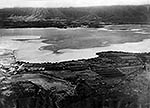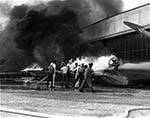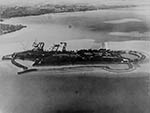 |
|
Old He‘eia
The elders of He‘eia and Kāne‘ohe describe these areas as they were decades ago, when this part of Ko‘olaupoko was still largely agricultural and just a sleepy outpost. |
 |
 |
|
Evictions
In 1918, President Woodrow Wilson designated, through Executive Order 2900, that the central portion of Mōkapu Peninsula become the U.S. Army’s Kuwa‘a‘ohe Military Reservation. The few people who lived out on the penninsula had to leave. |
 |
 |
|
Wartime
The Japanese attacks of December 7, 1941 targeted not just Pearl Harbor, but other military bases on O‘ahu. By then, the military reservation had become the Kāne‘ohe Naval Air Station on Mōkapu.
|
 |
 |
|
Omega Station
Long-range communications stations were established in He‘eia prior to the Second World War. They continued to evolve over time, leaving behind a building now known as the Omega Station, as well as the Ha‘ikū Steps. |
 |
 |
|
"Coconut Island"
In 1936 Bishop Estate sold Moku o Lo‘e to Christian Holmes II, an heir of the Fleischmann yeast company fortune. Holmes tranformed the island into a luxurious estate that was then used by the military during WWII. |
 |



































